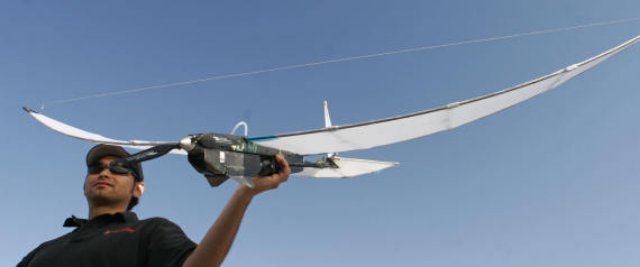The U.S. Forest Service’s controversial UAS programme, at first earmarked to spy out illegal marijuana cultivation in California, may have found new life, according to agency documents posted last week by the watchdog group Public Employees for Environmental Responsibility.
After years of being grounded in a law enforcement programme, the UAS are being transferred to the Forest Service’s fire-fighting wing to be guided by an internal group that “will not meet publicly and lacks a mandate to consider privacy concerns or other external issues,” says PEER.
In 2007, the Forest Service law enforcement programme bought two pilotless aircraft for photo reconnaissance. Despite spending $100,000 to purchase them, the two “Sky Seers” never saw a day of service as the law enforcement programme lacked both trained pilots and Federal Aviation Administration clearance to operate them, according to PEER, citing documents obtained under the Freedom of Information Act.
In a late 2010 briefing, the Forest Service law enforcement leadership informed the Chief Forester that it was giving up on its plans to use its UAS to combat marijuana cultivation in California forests and instead would transfer them to the agency’s Fire and Aviation programme.
“These documents make the Keystone Kops look like a crack operation compared to the Forest Service law enforcement leadership,” says PEER Executive Director Jeff Ruch, noting that the law enforcement programme stated it was “not aware of any legal or privacy constraints that would preclude the use” of a UAS and thus did no review of the issue. “It was especially galling to understaffed law enforcement field staff that their leadership was buying fancy hardware it had no conception of how to use.”
In September 2012, the Forest Service Fire and Aviation Management adopted a formal charter for “Unmanned Aircraft Systems” establishing a special advisory committee to develop a “strategic plan” for UAS use, to create protocols and guidance for their operation and to perform “risk assessment” of any proposed operations. The 14-member group was given three years to accomplish 10 listed tasks to facilitate UAS deployment.
This steering committee, however, is internal to the Forest Service and is not required to hold public meetings, says PEER. Nor is privacy protection for forest visitors or others among its assigned tasks, the watchdog group says.
“The Forest Service’s use of unmanned aircraft for fire management would not suffer in the least by being aired with the public,” says Mr. Ruch. “The Forest Service would benefit from greater public buy-in before its drones take flight.”
The fire programme has been tinkering with pilotless aircraft since 2005 when it spent $10,560 on a Cyber Bug UAS to begin developing command and control capacity in fast-moving fires. The FAA, however, is still working on rules to open unrestricted airspace to commercial and institutional UAS traffic.
Photo: Forest Service Skyseer
Source: Central Valley Business Times

